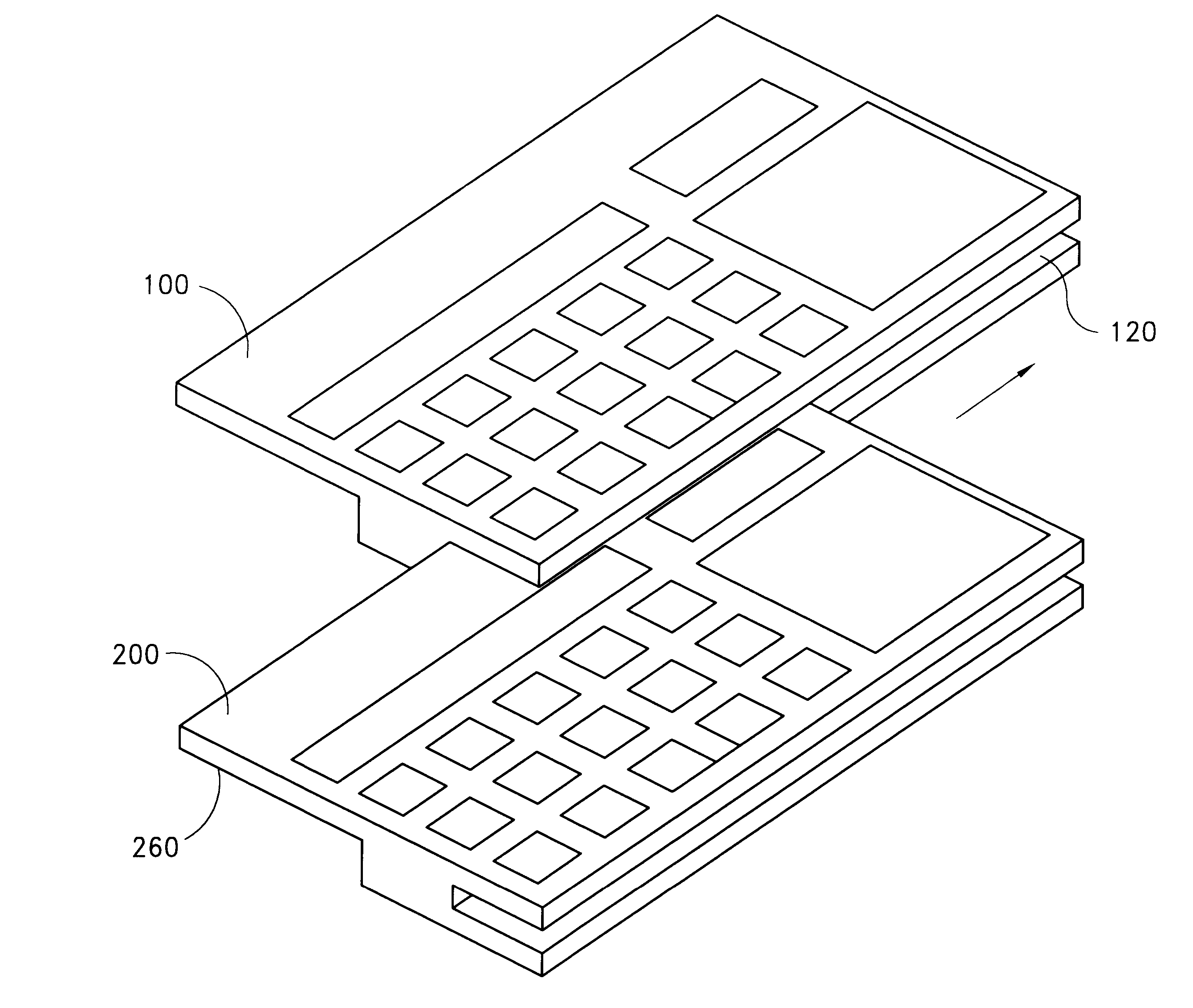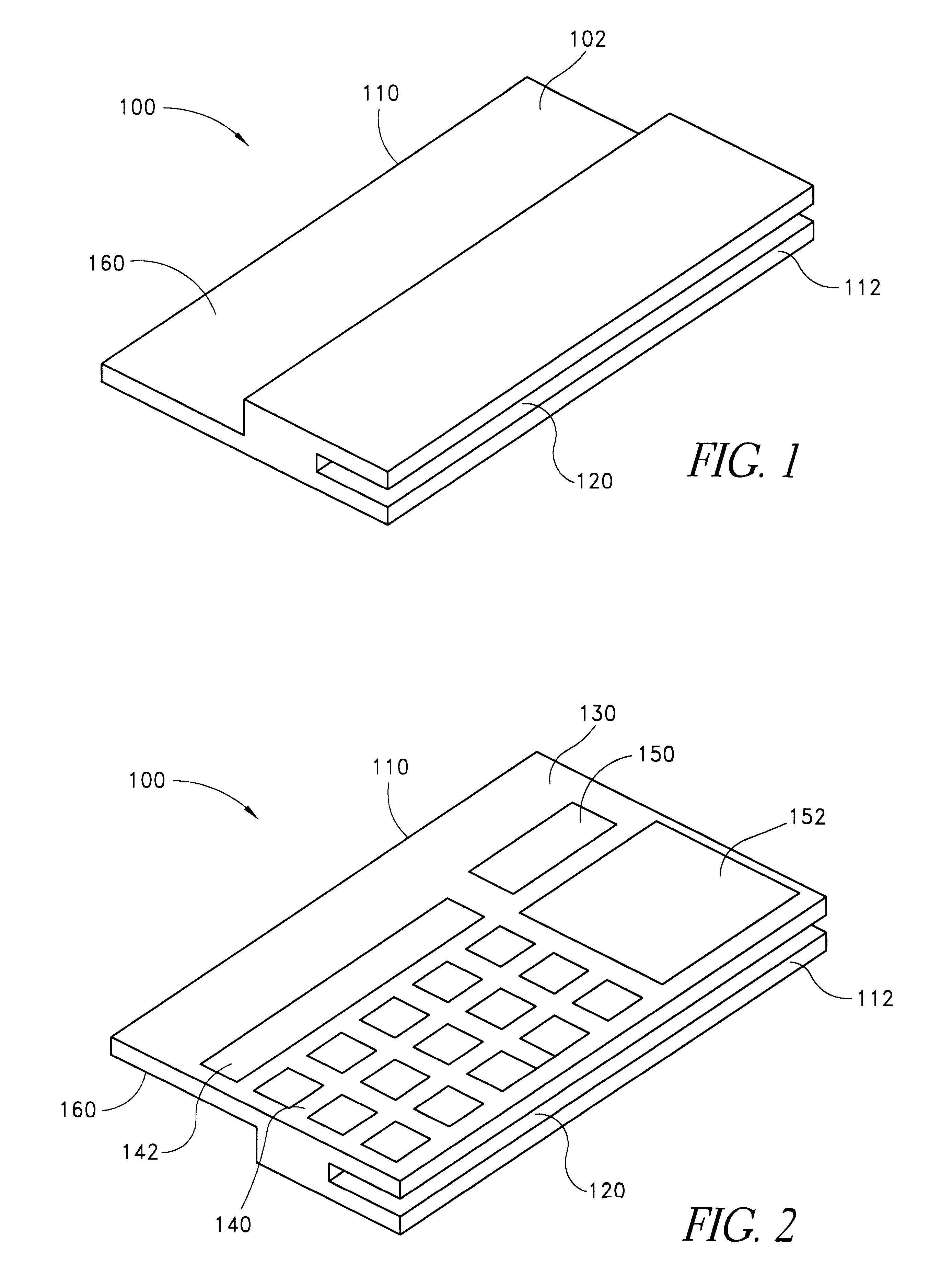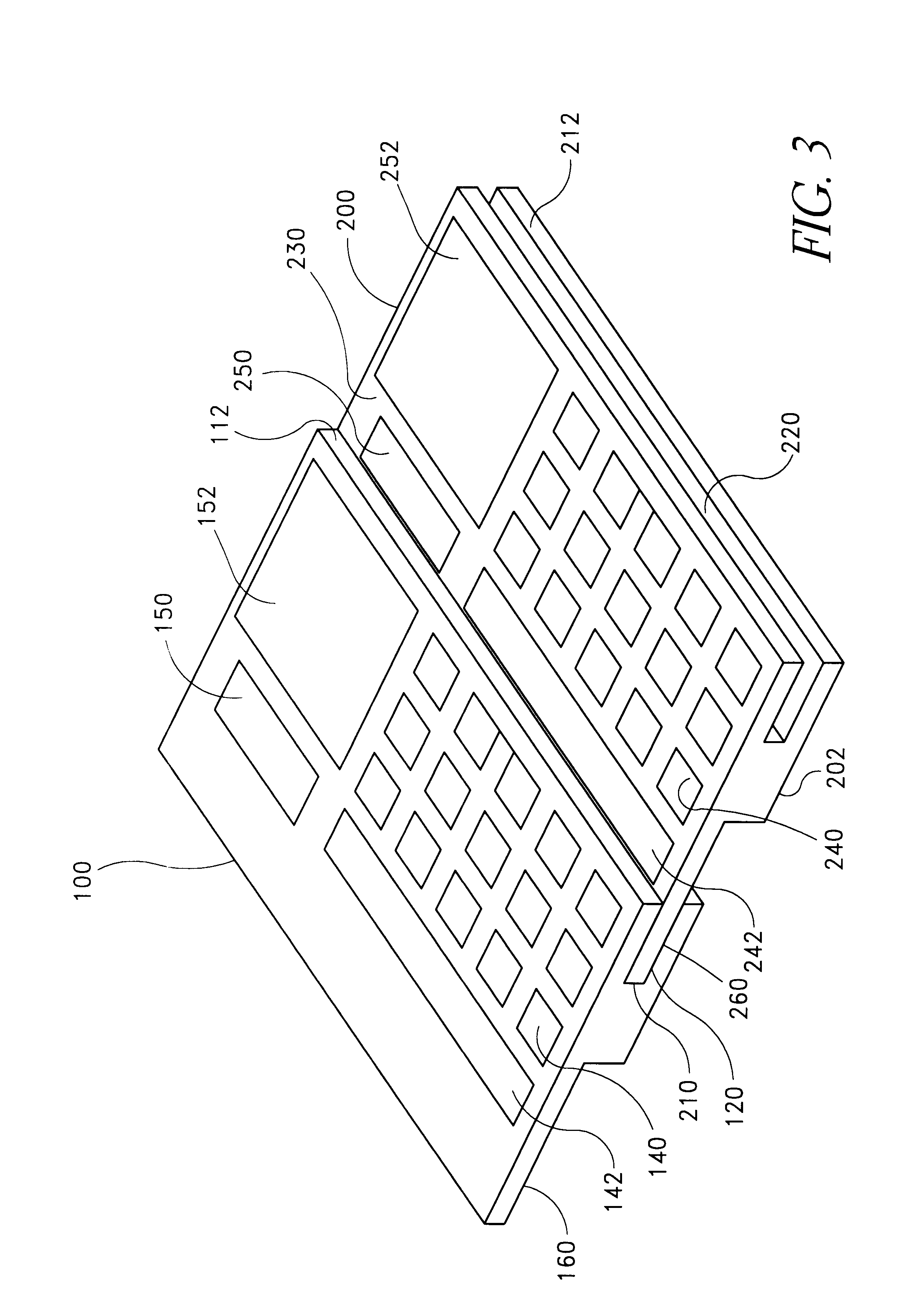System for card to card transfer of monetary values
a technology of monetary value and card to card, applied in the field of electronic transfer of monetary value, can solve the problems of not being able to provide the smart card owner with the flexibility of varying the monetary value, and not being able to be flexible as cash
- Summary
- Abstract
- Description
- Claims
- Application Information
AI Technical Summary
Benefits of technology
Problems solved by technology
Method used
Image
Examples
Embodiment Construction
FIG. 1 illustrates a first side 102 of an exemplary smart card 100 in accordance with the present invention. As illustrated, the smart card 100 has a size and shape that generally corresponds to the size and shape of a conventional credit card. For example, the smart card 100 is generally rectangular and has dimensions of approximately 3.4 inches by 2.1 inches (86 mm by 54 mm). The thickness of the smart card 100 can vary. In the embodiment shown in FIG. 1, the smart card 100 has a first thickness along a first edge 110 and a second thickness along a second edge 112. The thickness of the first edge 110 is approximately the thickness of a conventional credit card and may be less than approximately 0.05 inch. The thickness of the second edge 112 is approximately three times the thickness of the first edge and may be less than approximately 0.15 inch. As illustrated, the second edge 112 has a slot 120 formed therein. The purpose of the slot 120 will be described below.
As illustrated in...
PUM
 Login to View More
Login to View More Abstract
Description
Claims
Application Information
 Login to View More
Login to View More - R&D
- Intellectual Property
- Life Sciences
- Materials
- Tech Scout
- Unparalleled Data Quality
- Higher Quality Content
- 60% Fewer Hallucinations
Browse by: Latest US Patents, China's latest patents, Technical Efficacy Thesaurus, Application Domain, Technology Topic, Popular Technical Reports.
© 2025 PatSnap. All rights reserved.Legal|Privacy policy|Modern Slavery Act Transparency Statement|Sitemap|About US| Contact US: help@patsnap.com



